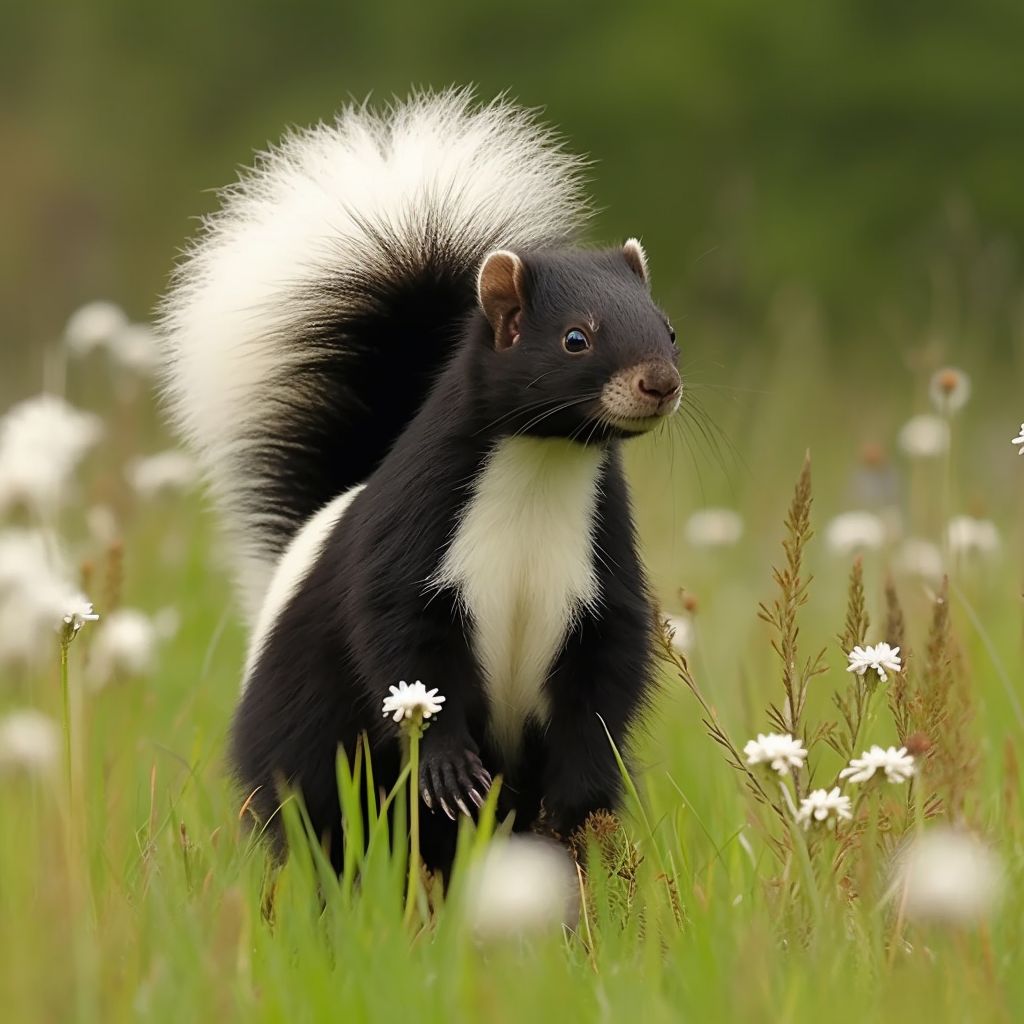Skunk
Skunks are small, nocturnal mammals known for their distinctive black and white coloration and their ability to spray a strong, unpleasant-smelling liquid as a defensive measure. In North America, they are a common sight in both rural and urban areas. In the late 19th century, skunks have become a subject of interest due to the development of skunk automatons, which serve as unique and innovative pets without the foul odor associated with their living counterparts.
Skunks: Natural History and Behavior
There are several species of skunks, with the most common and well-known being the striped skunk (Mephitis mephitis). Skunks are omnivorous, feeding on a variety of insects, small animals, and plants. They are solitary animals, primarily active during the night, and are known for their distinctive warning display before spraying their malodorous liquid. This liquid, produced by glands near the base of the skunk's tail, can be sprayed up to 10 feet and is a highly effective deterrent against potential predators.
Skunk Automatons: Origins and Features
In the late 19th century, the development of skunk automatons has brought these fascinating creatures into the realm of innovative pet ownership. Crafted by The Evil Eye Syndicate, these mechanical animals closely resemble real skunks in appearance but lack the ability to produce the foul-smelling spray associated with their living counterparts.
Skunk automatons are designed with intricate gears and mechanisms that allow them to move in a realistic manner, mimicking the natural behaviors of skunks. These automatons are typically covered with a fur-like material, providing them with a soft and lifelike texture. They are equipped with a range of sensors that enable them to interact with their environment, responding to touch, sound, and movement in a manner similar to a living skunk.
The Appeal of Skunk Automatons as Pets
The skunk automatons have become popular as pets due to their unique appearance and behavior, which is both entertaining and intriguing. Since they do not produce the characteristic skunk odor, these mechanical animals are an ideal choice for those who appreciate the beauty and charm of skunks without the drawbacks of their natural defense mechanism.
In addition to their novelty, skunk automatons are also low-maintenance pets, requiring minimal care compared to living animals. They do not require food, water, or cleaning, making them a convenient and hassle-free option for busy individuals or those with allergies to animal fur.
Conclusion
Skunks have long been a part of the North American landscape, and the development of skunk automatons in the late 19th century has brought these intriguing creatures into the realm of technology and innovation. The Evil Eye Syndicate's creation of lifelike, odorless skunk automatons has provided a unique and fascinating pet option for those who appreciate the charm and beauty of skunks without the associated drawbacks. These mechanical animals stand as a testament to Human ingenuity and our ability to blend the natural world with the realm of technology.

